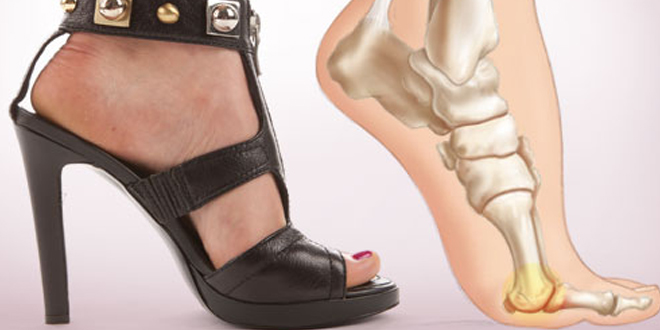
Five reasons why you should not buy high heels this Eid
Contemporary experts suggest that high heels are a sign of confidence. They manifest higher standards and leadership. Greek artist Aeschylus was the first person to introduce high heels for theatrical purposes; he claimed it added ‘majesty to heroes.’ In Europe women wore shoes with higher soles to keep their dresses from dragging onto the dirt of the streets.
Even now, the concept of heels has plagued the fashion world to the core. Fashion shows in the 21st century are incomplete without trendy stilettos, wedges, chunky heels, platforms and various heel designs beyond our imagination.
Brands and retailers claim that wearing heels at work every day would increase your chances of getting promoted; they would ooze leadership and add an intimidating aura to your personality.
However, do you really need heels to add personality to your stature?
Would you really want to walk around in excruciating pain to be heard?
Is damaging your internal body structures really important if you want your opinions to be weighed?
The long term effects of wearing high heels are not just a few. If you ended up bedridden, looking attractive would be the last thing on your mind.
It affects more than one part of your body
High heels aren’t focused on ruining any one part of your body. They affect the spine, muscle tendons, muscle ligaments, leg muscles, joints, toes, and nails. According to Dr Nevins, when you wear heels your foot slides forward. This movement causes the toe to form an abnormal shape. This also bends your body forward. To compensate that posture, you move your upper body backwards which puts a lot of strain on your backbone and pressurizes your nerves. The pressure on the nerves can be painful at first and eventually cause numbness in the lower part of your body.
It harms your backbone
A condition called ‘foraminal stenosis’ occurs when women wear high heels for a prolonged period of time over the course of years. A foramen is a hole or a cavity and a stenosis is the narrowing of a passage. Here’s what happens in this case: The backbone has a long passage in between, and here is where the spinal cord lies. The spinal cord contains all of the nerves and controls the movement of your limbs and organs. When a lot of pressure is applied due to wrong posture on the backbone, the passage of spinal cord becomes narrow as the ligaments that connect the pieces of back bone put stress on the nerves. This would eventually result in tingling, muscle spasms, cramping, pain that radiates through the buttocks down the legs, and sciatica.
Achilles tendon
‘Achilles tendon’ is another condition that results from wearing heels on a regular basis. Tendon is what joins muscle to bone. The tendon in the lower leg becomes shorter and harder due to high heels. If you wear heels constantly, this can actually become short permanently, so when you wear flats the tendon will stretch and get injured. This would cause inflammation in the tendon known as tendinitis.
Pump Bump
‘Pump Bump’ is a bony deformity (a bump) at the back of the heel. As the name suggests, it is caused by the rigid strap of the pumps.
Morton’s Neuroma
Morton’s Neuroma is the thickening of nerves. Heels with a narrow front or ‘alligator’ heels cause this disorder. A lump of nerves forms on the underside of the foot found in between the third and fourth toes; it leads to toe pain and numbness.
High heels are great for parties or formal events, but to make them a part of your daily routine is downright wrong – no arguments. If you have a job that requires you to wear high heels then choose heels with no more than one inch height and a wide base. Make sure your heels are the right size, not too small.
Take time to stretch, do some yoga and walk in good joggers with shock absorbers. Look up exercises for those who wear heels. This issue is more than just skin deep and the quicker you take action, the better.

